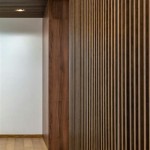Small Interior Design Ideas: Maximizing Space and Style
Interior design for small spaces presents unique challenges. Limited square footage requires a strategic approach to maximize functionality and create a visually appealing environment. Thoughtful planning, clever storage solutions, and a careful selection of decor are essential for transforming a cramped area into a comfortable and stylish living space. This article explores various interior design ideas specifically tailored for small spaces, focusing on principles that enhance both the aesthetic and practical aspects of living in a compact environment.
Embracing Verticality: Utilizing Wall Space for Storage and Decor
One of the most effective ways to optimize space in a small interior is to leverage verticality. Walls often represent untapped potential for storage and display. Instead of relying solely on floor-based furniture, consider incorporating shelves, cabinets, and even vertical gardens to draw the eye upward and free up valuable ground space. This approach not only provides practical storage but also contributes to the overall visual interest of the room.
Floating shelves are a versatile option for displaying books, plants, and decorative objects. They create a sense of lightness and openness, particularly when mounted with minimal hardware. Open shelving allows for a customizable display, enabling homeowners to showcase their personal style while maintaining a sense of organization. Alternatively, closed cabinets mounted on walls offer concealed storage for items that do not need to be readily accessible, maintaining a clutter-free environment.
Beyond storage, verticality can be used to enhance the design aesthetic. Tall, narrow mirrors, for example, can create the illusion of height and depth, making a room feel larger than it actually is. Artwork hung vertically can also draw the eye upward, adding visual interest and expanding the perceived dimensions of the space. Consider incorporating a gallery wall utilizing different sizes and styles of frames to add personality and visual texture to the room.
Vertical gardens, whether indoors or outdoors, represent another innovative approach to maximizing space. A living wall not only adds a touch of nature to the interior but also contributes to improved air quality. These vertical gardens can be customized to fit the available space and can incorporate a variety of plants, adding color and texture to the overall design scheme.
Optimizing Furniture Selection: Multifunctional Pieces and Scaled-Down Designs
The selection of furniture plays a crucial role in the success of small interior design. Choosing multifunctional pieces and scaled-down designs is essential for maximizing space and avoiding unnecessary clutter. Prioritizing furniture that serves multiple purposes or is specifically designed for small spaces can significantly improve the functionality and comfort of the room.
Multifunctional furniture, such as sofa beds, storage ottomans, and coffee tables with built-in storage, offers practical solutions for maximizing space. A sofa bed can transform a living room into a guest room, while a storage ottoman provides a convenient place to store blankets, pillows, or other items. A coffee table with a lift-top mechanism can serve as a dining table or workspace when needed, further enhancing the versatility of the room.
Scaled-down furniture is designed specifically for smaller spaces. Chairs, tables, and sofas with slimmer profiles and smaller dimensions can fit comfortably into a compact room without overwhelming the space. Avoiding bulky or oversized furniture is crucial for maintaining a sense of openness and flow.
Consider using lightweight and easily movable furniture. This allows for flexibility in rearranging the layout of the room as needed. Folding chairs and tables can be easily stored away when not in use, freeing up valuable space. Nesting tables offer a similar advantage, providing multiple surfaces when needed and consolidating into a single unit for storage.
Modular furniture systems offer a highly customizable solution for small spaces. These systems allow homeowners to create a furniture arrangement that perfectly fits their specific needs and preferences. Modules can be added or removed as necessary, providing flexibility and adaptability over time.
Color Palette and Lighting: Creating Illusion of Openness and Brightness
The choice of color palette and lighting significantly impacts the perceived size and atmosphere of a small room. Utilizing light and bright colors, coupled with strategic lighting techniques, can create an illusion of openness and brightness, making the space feel larger and more inviting. Careful consideration of these elements is crucial for achieving a successful small interior design.
Light colors, such as white, cream, and pastel shades, reflect light and create a sense of airiness. Using a monochromatic color scheme, where different shades of the same color are used throughout the room, can also contribute to a sense of visual harmony and spaciousness. Avoiding dark or heavy colors, which can absorb light and make the room feel smaller, is generally recommended.
Incorporating pops of color through accessories, artwork, or accent furniture can add personality and visual interest without overwhelming the space. These pops of color should be carefully chosen to complement the overall color scheme and should be used sparingly to avoid creating a cluttered or chaotic look.
Natural light is a valuable asset in any small space. Maximizing natural light by keeping windows clear and using sheer curtains or blinds can significantly enhance the brightness and openness of the room. Mirrors can also be strategically placed to reflect natural light and create the illusion of greater space.
Artificial lighting plays a vital role in supplementing natural light and creating the desired ambiance. Layered lighting, which combines ambient, task, and accent lighting, is an effective way to illuminate a small space. Ambient lighting provides overall illumination, while task lighting focuses on specific areas, such as a reading nook or workspace. Accent lighting highlights architectural features or decorative objects, adding visual interest and depth to the room.
Consider using recessed lighting or track lighting to minimize the visual impact of light fixtures. Wall-mounted sconces and pendant lights can also save floor space and add a touch of elegance. Dimmable lighting allows for adjusting the brightness and creating different moods within the room.
In summary, small interior design requires careful planning and strategic execution. By embracing verticality, optimizing furniture selection, and thoughtfully considering color and lighting, it is possible to transform a small space into a comfortable, stylish, and functional living environment. The key is to prioritize functionality, maximize space, and create a visually appealing design that reflects the homeowner's personal style.

22 Small House Interior Design Ideas How To Decorate A Space

Small House Design 10 Ideas To Beautify Your Home In 2024

50 Smart Design Ideas For Small Spaces

6 Small Room Decor Ideas To Maximise Space In Your Home Architectural Digest
:max_bytes(150000):strip_icc()/small-living-room-ideas-4129044-hero-25cff5d762a94ccba3472eaca79e56cb.jpg?strip=all)
52 Small Living Room Ideas To Maximize Space And Style

46 Extraordinary Tiny House Interior Ideas

9 Small House Interior Design S To Try Beautiful Homes
:strip_icc()/HH_AlannaDunn_Order1_004-cc8d4bd0d52d4e57a65289efb5505df1.jpeg?strip=all)
22 Small Room Décor Ideas That Are Almost Too Easy

5 Interior Design Ideas For Small Homes On A Low Budget

Interior Design Ideas For Small Condo Spaces Gal At Home Studio
Related Posts








